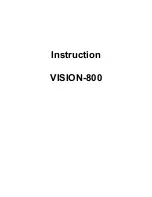
©
XPAND
, All Rights Reserved.
5
www.xpandcinema.com
Stereoscopic Vision and 3D
When you see the world through both eyes, you are actually looking at two
pictures merged into one. Your right eye and your left eye each deliver a
separate image to your brain, which meshes these two images into one
three-dimensional picture.
Most movies in the past were only able to provide one image on the screen.
Thus 3D effects have to be simulated by other means. Your XPAND 3D
glasses, however, are able to provide a different view for each eye, more
closely simulating true 3D vision.
Each scene of your 3D content has two images, one drawn from a right-eye
view and the other from a left-eye view. Your display shows these alternating
views so fast that your eyes cannot see the change.
Your XPAND 3D glasses are equipped with shutters in each lens. So, when
the right-eye image is displayed on the screen, the left lens of your XPAND
3D glasses is closed, allowing only the right eye to see the image. When the
left-eye image is displayed, the process is reversed and only the left eye can
see the image. These images alternate so quickly that the eye sees only one
smooth picture, making it look like you are actually inside a 3D environment.
What do I need for viewing 3D?
»
3D content (movies, video games, etc.)
»
A 3D Playback Device (PC, gaming console, Blu-Ray player, etc) that
matches the requirements of your display or projector
»
A 3D Enabled DLP-Link™ or a 3D Enabled DLP projector
»
XPAND DLP
®
Link™ 3D glasses
manual-BW-4x6_FAQ-new-battery-instr-v6-2PACK.indd 5
16.11.2010 16:36:55























